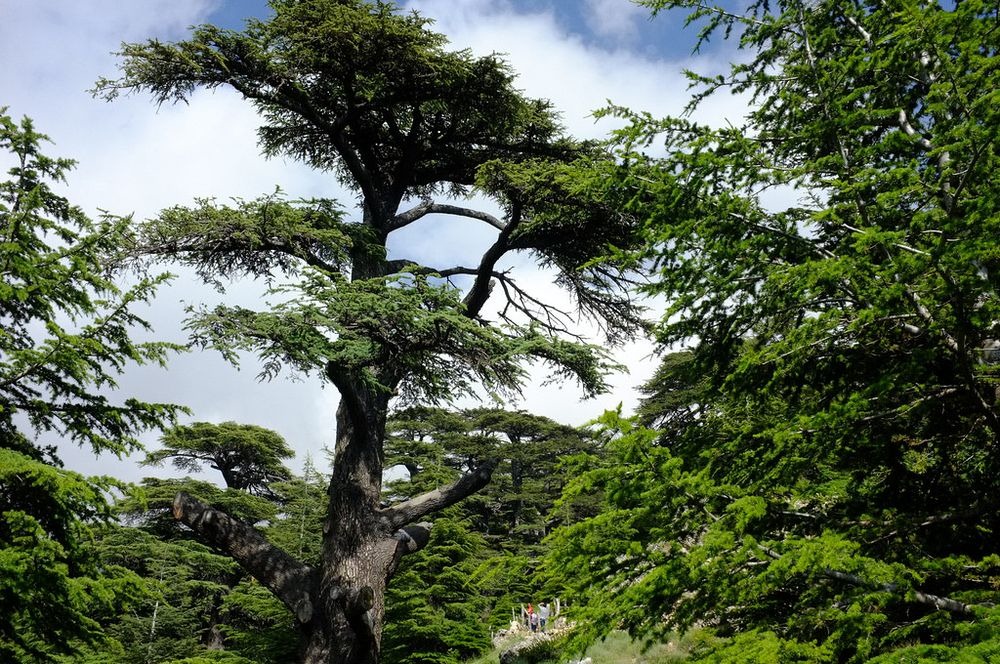Located in the mountains of Lebanon, the Cedars of God stands as a testament to the country’s rich natural heritage and historical significance. This ancient forest, with its majestic cedar trees, has captured the imagination of visitors for centuries. Known for its biblical references and remarkable beauty, the Cedars of God is a must-visit destination for nature lovers, history enthusiasts, and those seeking tranquility in the embrace of nature.
- The Significance of the Cedars of God: The Cedars of God, also known as the Cedars of Lebanon, hold deep historical and cultural importance. These towering trees are mentioned numerous times in the Bible and were revered for their strength, durability, and aromatic wood, which was used in the construction of temples and palaces. The cedar trees symbolize resilience, longevity, and the enduring spirit of Lebanon.
- Location and Accessibility: The Cedars of God is located in the Kadisha Valley of the Mount Lebanon range, approximately 120 kilometers (75 miles) north of Beirut. The forest is accessible by car, and there are designated parking areas nearby. From there, visitors can explore the forest on foot through well-marked trails.
- Majestic Cedar Trees: The Cedars of God is home to some of the oldest cedar trees in the world, with some specimens estimated to be over 1,000 years old. These grand trees reach towering heights, creating a majestic canopy that evokes a sense of awe and reverence. Walking amidst these ancient giants is a humbling experience, allowing visitors to connect with nature in its purest form.
- The Nature Reserve: The Cedars of God is a designated nature reserve, aiming to protect the forest and its ecosystem. The reserve encompasses an area of approximately 3 square kilometers (1.2 square miles) and is home to diverse flora and fauna. During your visit, keep an eye out for unique plant species and wildlife, such as wild boars, foxes, and various bird species.
- Hiking Trails: The Cedars of God offers a network of well-maintained hiking trails, allowing visitors to explore the forest and its surroundings. These trails cater to different skill levels, from leisurely walks suitable for families to more challenging treks for experienced hikers. As you traverse the trails, immerse yourself in the serene beauty of nature, taking in the fresh mountain air and panoramic views.
- The Museum and Visitor Center: The Cedars of God is complemented by a museum and visitor center, providing insight into the forest’s history, ecology, and cultural significance. The museum showcases artifacts, historical documents, and interactive exhibits, offering a deeper understanding of the forest’s role throughout the ages. Knowledgeable guides are available to provide additional information and answer any questions you may have.
- Nearby Attractions: While visiting the Cedars of God, take the opportunity to explore other nearby attractions. The nearby Qadisha Valley, a UNESCO World Heritage Site, is renowned for its breathtaking landscapes, ancient monasteries, and historical significance. Additionally, the charming town of Bcharre, the birthplace of renowned poet Khalil Gibran, is worth a visit for its cultural heritage and stunning mountain vistas.
- Practical Information:

a. Opening Hours and Admission: The Cedars of God is open to visitors throughout the year, with varying opening hours depending on the season. An admission fee is required to access the forest and support its conservation efforts. It is recommended to check the official website or contact the reserve for up-to-date information.
b. Weather: The climate in the Cedars of God area is generally cool and refreshing due to its mountainous location. Summers are mild, with temperatures ranging from 20°C to 25°C (68°F to 77°F), while winters can be cold and snowy, with temperatures occasionally dropping below freezing. It is advisable to pack appropriate clothing layers to accommodate changing weather conditions.
c. Conservation and Respect: As a protected natural reserve, it is important to respect and preserve the Cedars of God. Visitors are encouraged to follow designated trails, refrain from littering, and avoid damaging or climbing the trees. Adherence to these guidelines ensures the sustainability of the forest for future generations to enjoy.
d. Photography Opportunities: The Cedars of God offers picturesque scenery and unique photo opportunities. Capture the grandeur of the ancient cedar trees, the dappled sunlight filtering through the forest, and the surrounding mountain vistas. Remember to be mindful of your surroundings and avoid disturbing the natural environment while taking photographs.
e. Nearby Amenities: The Cedars of God area provides amenities such as cafes, restaurants, and souvenir shops where you can relax, refuel, and find unique mementos to commemorate your visit. Additionally, there are nearby accommodation options available for those who wish to extend their stay and explore the surrounding area in more depth.
Conclusion || Cedars of God
A visit to the Cedars of God is a journey through time, immersing oneself in the majesty and significance of Lebanon’s ancient cedar forest. From the towering trees that have witnessed centuries of history to the serene trails that invite exploration, this natural wonder offers an escape into tranquility and a chance to connect with nature’s enduring beauty. Plan your trip to the Cedars of God, and embark on an unforgettable experience that celebrates the legacy and resilience of Lebanon’s iconic cedar trees.
Book Your Flights : Here 30% OFF on Booking
Book Your Hotels : Here 20% OFF on Booking

0 Comment